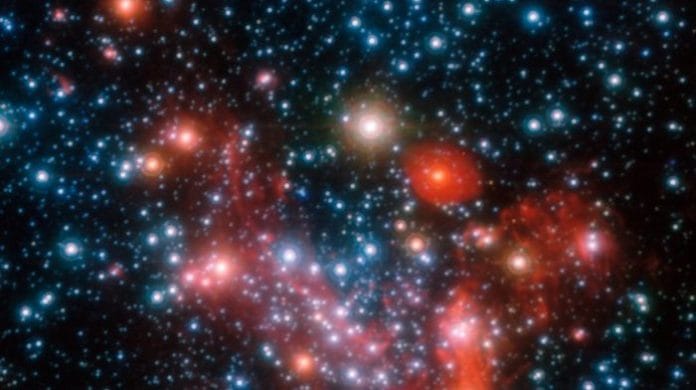Bengaluru: Astronomers have charted a stellar three-dimensional map of the Milky Way that shows its disc of stars dramatically warped into a wave. The latest image once again proves that the spiral galaxy is not shaped like a flat disc, as a previous study which was published in February has shown.
The images demonstrate that the galaxy is warped into a wave, like the brim of a straw hat. This new map was created by mapping over 2,400 cepheids that are scattered throughout the galaxy. Cepheids are stars which dim and brighten periodically and are used as cosmic yardsticks to measure galactic and extragalactic distances.
The results of the study, conducted by the University of Warsaw, are published in the journal Science.

Using Cepheids to map galaxy
Cepheids are variable stars, meaning they change in brightness. These stars were first discovered by astronomer Henrietta Swan Leavitt in 1908 and are very young in their formation process. They are anywhere from 100 to 10,000 times brighter than the Sun.
Cepheids pulsate radially and produce changes in brightness and size — this allows scientists to study them across large swathes of space. These are used as reference points to calculate distances of other objects in our galaxy.
Polish researchers conducting the new study used the Optical Gravitational Lensing Experiment (OGLE) — a telescope that has enabled scientists to detect thousands of cepheids. They used new data from the telescope along with existing literature to map cepheids all across the Milky Way.
The previous study had also used cepheids to arrive at the same conclusion.
Also read: Astronomers spot flares travelling at 30% the speed of light outside Milky Way black hole
Why our galaxy bends
The warping of the galaxy is seen only along the edges and not at the centre because the gravitational forces in its center are too strong to move stars away from the flat plane of the Milky Way. So, a likely explanation for the warping around its edges is low gravity and lesser density of material, causing outer stars to also come under the gravitational influence of other planetary bodies and move them away from the plane.
The outer stars could also be impacted by the gravitational tug of neighbouring galaxies.
The study states that bending of the galaxy begins about 26,000 light years away from its centre, near where our own solar system exists, and becomes increasingly stronger from about 32,000 light years. It also reinforces the previous study’s observation that cepheids are distributed disproportionately in the galaxy, with a majority of them lying in an arc on one side.

The study found that younger cepheids are present closer towards the centre of the galaxy while older ones are spread out towards the edges.
The researchers also clarified that such warping of galaxies is not unusual and is possibly present across most spiral galaxies.
Also read: Closest-ever image takes us a step closer to monster Milky Way black hole






